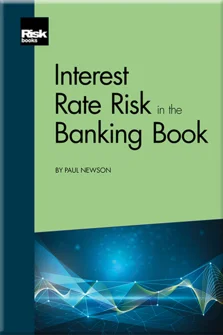Other Types of Market Risk
Other Types of Market Risk
Introduction
An Overview of Banking
Relevant Accounting and Financial Concepts
Fundamentals of Interest Rate Risk and the Banking Book
Standard Metrics for Identification and Assessment of IRRBB
Managing and Hedging IRRBB
Interest Rate Basis Risk
Behavioural Assumptions in the Management of IRRBB
Non-dated Liabilities
Other Types of Market Risk
Reporting and the Management Process
IRRBB: Its Links to the Operating Plan and Stress Testing
Regulatory Requirements
While interest rate risk is probably the most significant market risk to which a banking book is subject, it is important to appreciate that a banking book may also on occasion be subject to other market risks. This chapter will consider foreign exchange, equity and asset spread risk in turn, looking at their likely possible sources, how they might be measured and what hedging solutions a bank might consider.
FOREIGN EXCHANGE RISK
Foreign exchange risk exists for any currency where there is an imbalance between the assets and liabilities denominated in that currency. An excess of assets over liabilities in a particular currency – termed a “long position” – means the bank is at risk of that currency depreciating relative to the bank’s base currency. An excess of liabilities over assets – a “short position” – puts the bank at risk of that currency appreciating.
Generally speaking, in its banking book a bank will seek to minimise its level of foreign exchange risk, which can usually be achieved simply by transacting a foreign exchange deal to close the position: selling the long currency and buying the short currency. However, due to operational and other reasons there will
Copyright Infopro Digital Limited. All rights reserved.
As outlined in our terms and conditions, https://www.infopro-digital.com/terms-and-conditions/subscriptions/ (point 2.4), printing is limited to a single copy.
If you would like to purchase additional rights please email info@risk.net
Copyright Infopro Digital Limited. All rights reserved.
You may share this content using our article tools. As outlined in our terms and conditions, https://www.infopro-digital.com/terms-and-conditions/subscriptions/ (clause 2.4), an Authorised User may only make one copy of the materials for their own personal use. You must also comply with the restrictions in clause 2.5.
If you would like to purchase additional rights please email info@risk.net











